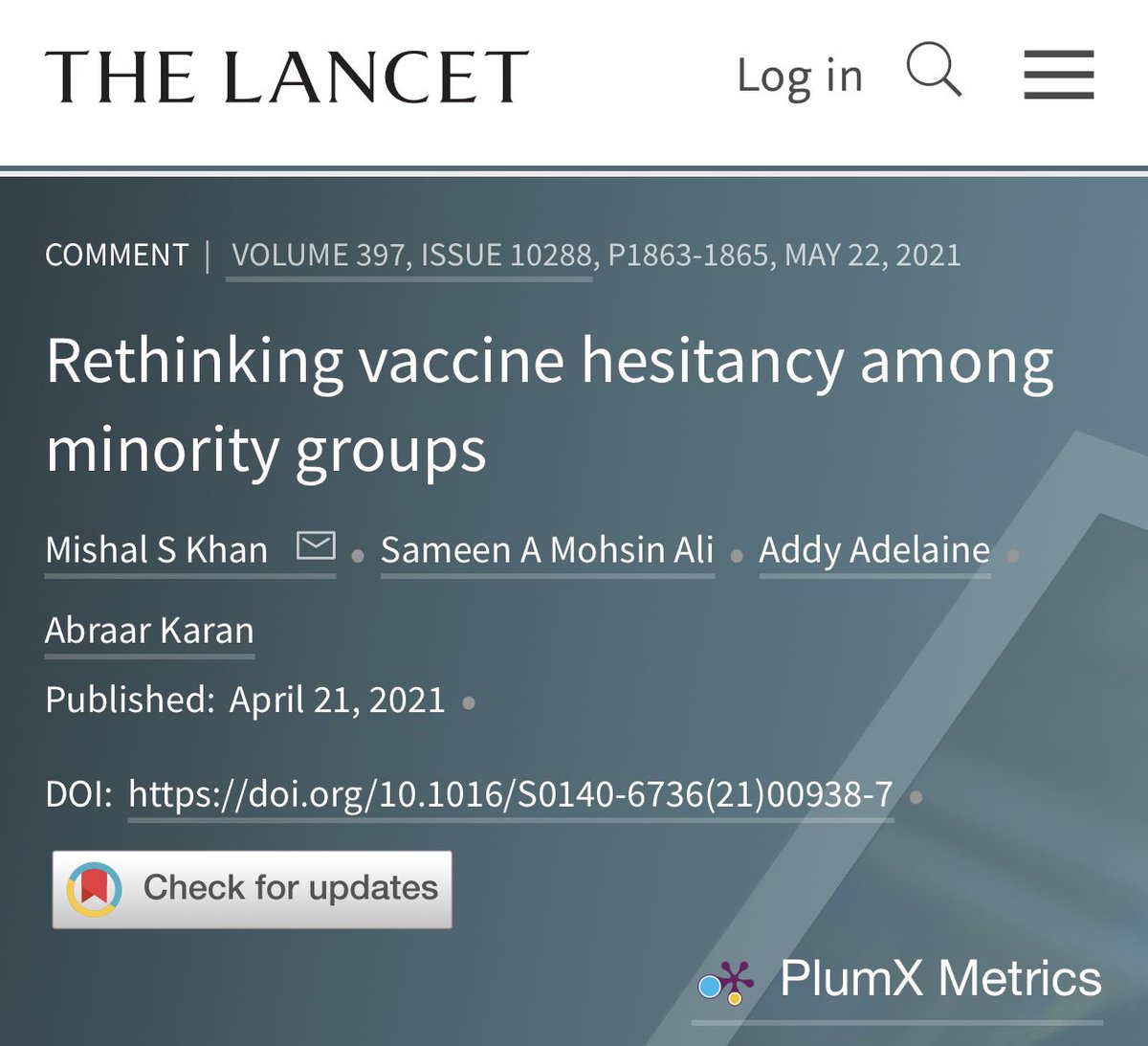
🧵🧵🧵
1/ Nice column by @DLeonhardt this morning
Removing barriers for vaxx is our next big task to close inequities
Part of that is information, but I think a bigger part is overcoming pragmatic challenges:
•paid time off to get 💉/recover
•on-site vaxx in workplaces
1/ Nice column by @DLeonhardt this morning
Removing barriers for vaxx is our next big task to close inequities
Part of that is information, but I think a bigger part is overcoming pragmatic challenges:
•paid time off to get 💉/recover
•on-site vaxx in workplaces
2/ For the past year, I rarely had any #covid19 patients who worked from home
The inequities of who got sick were baked right into the way our society was already set up
We are seeing vaxx inequity play out the same — being able to get the vaxx is a big privilege (time,$ etc)
The inequities of who got sick were baked right into the way our society was already set up
We are seeing vaxx inequity play out the same — being able to get the vaxx is a big privilege (time,$ etc)
3/ While attitudes don’t explain the whole story, there is an interesting reduction in the % of “definitely not” getting 💉 group when you subdivide it into “college grads” v “non-grads” seen across categories
source @KFF /graphics @nytimes

source @KFF /graphics @nytimes


4/ Many have pointed this out all year, but we must focus on getting people more resources rather than imposing more restrictions, some (like outdoor mask mandates) which have little bang for their buck
If we put our money where the science points, our fastest path out is 💉💉
If we put our money where the science points, our fastest path out is 💉💉
5/ Having a few “national vaccine days” would/could go a long way
although need to make sure that large groups of unvaccinated people are wearing masks/distancing before they congregate together #covid19
although need to make sure that large groups of unvaccinated people are wearing masks/distancing before they congregate together #covid19
6/ @nytimes has a graph mapping vaccination % against social vulnerability indexes—>
our most vulnerable counties have lower vaccination rates than the least vulnerable, on average ; not surprising after this past year (& before it)
our most vulnerable counties have lower vaccination rates than the least vulnerable, on average ; not surprising after this past year (& before it)

7/ And across regions, there are still large discrepancies with the northeast hitting ~50% fully vaxx in many states whereas in the south some states are ~30%
With states dropping mask mandates, many are rightfully concerned whether this could cause a resurgence #covid19
With states dropping mask mandates, many are rightfully concerned whether this could cause a resurgence #covid19

8/ But- perhaps that won’t happen at all, as @DKThomp wrote about re Texas, a state which dropped its mask mandate a while ago yet did not see a catastrophic rise in #covid19
The story isn’t simple- & I think this piece is excellent
theatlantic.com/ideas/archive/…
The story isn’t simple- & I think this piece is excellent
theatlantic.com/ideas/archive/…
9/ Nonetheless we have seen people use data like Texas or Florida to suggest masks don’t work
Don’t let them fool you
With large complex systems like an entire state, there are *many* confounders - when isolating the variable of masks, they do in fact reduce inhalation of virus
Don’t let them fool you
With large complex systems like an entire state, there are *many* confounders - when isolating the variable of masks, they do in fact reduce inhalation of virus
10/ Much work to be done here & globally
@DrMishalK myself & colleagues wrote a bit about the vaccine “hesitancy” issue in @TheLancet if of interest:
secure.jbs.elsevierhealth.com/action/consume…
@DrMishalK myself & colleagues wrote a bit about the vaccine “hesitancy” issue in @TheLancet if of interest:
secure.jbs.elsevierhealth.com/action/consume…

• • •
Missing some Tweet in this thread? You can try to
force a refresh





